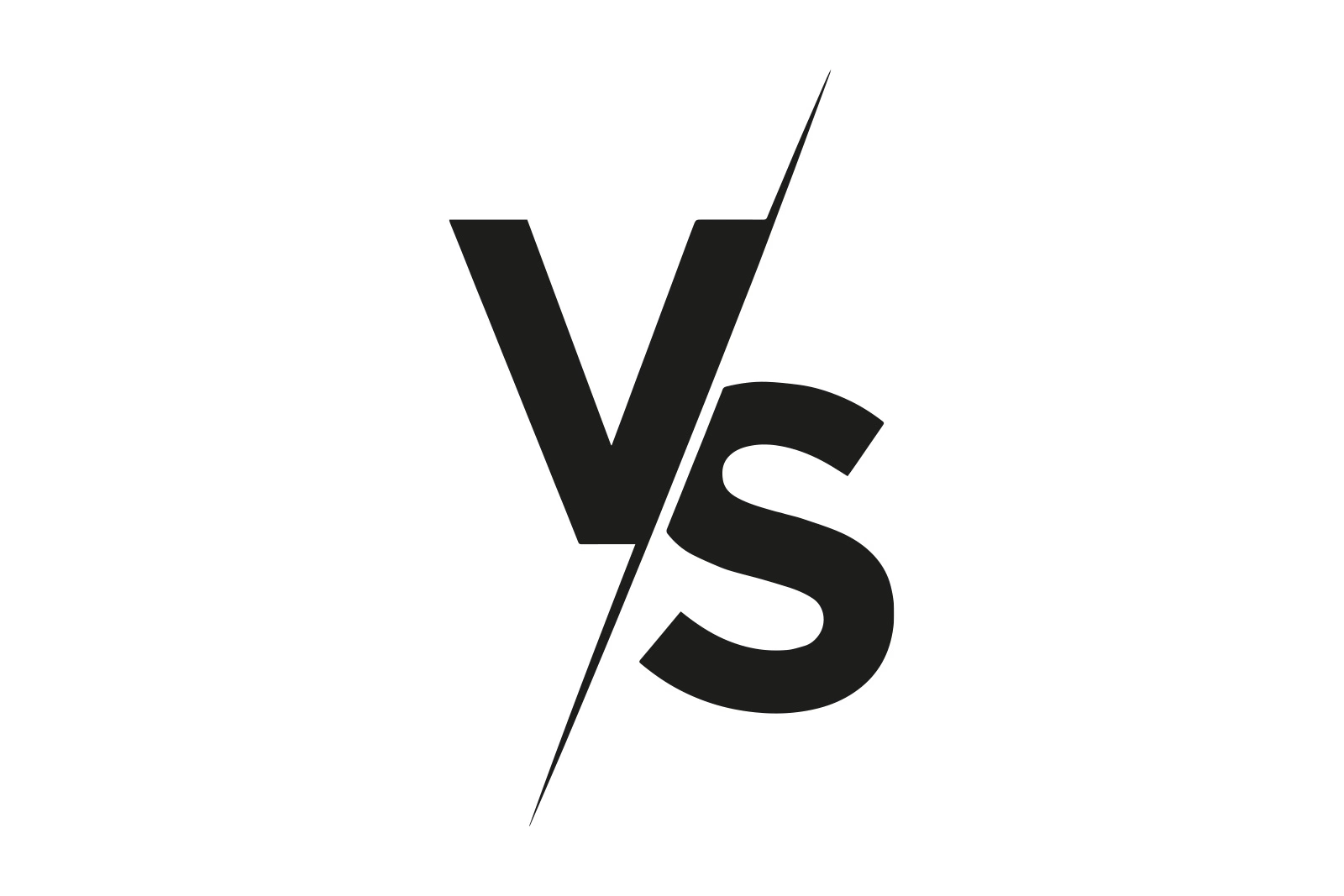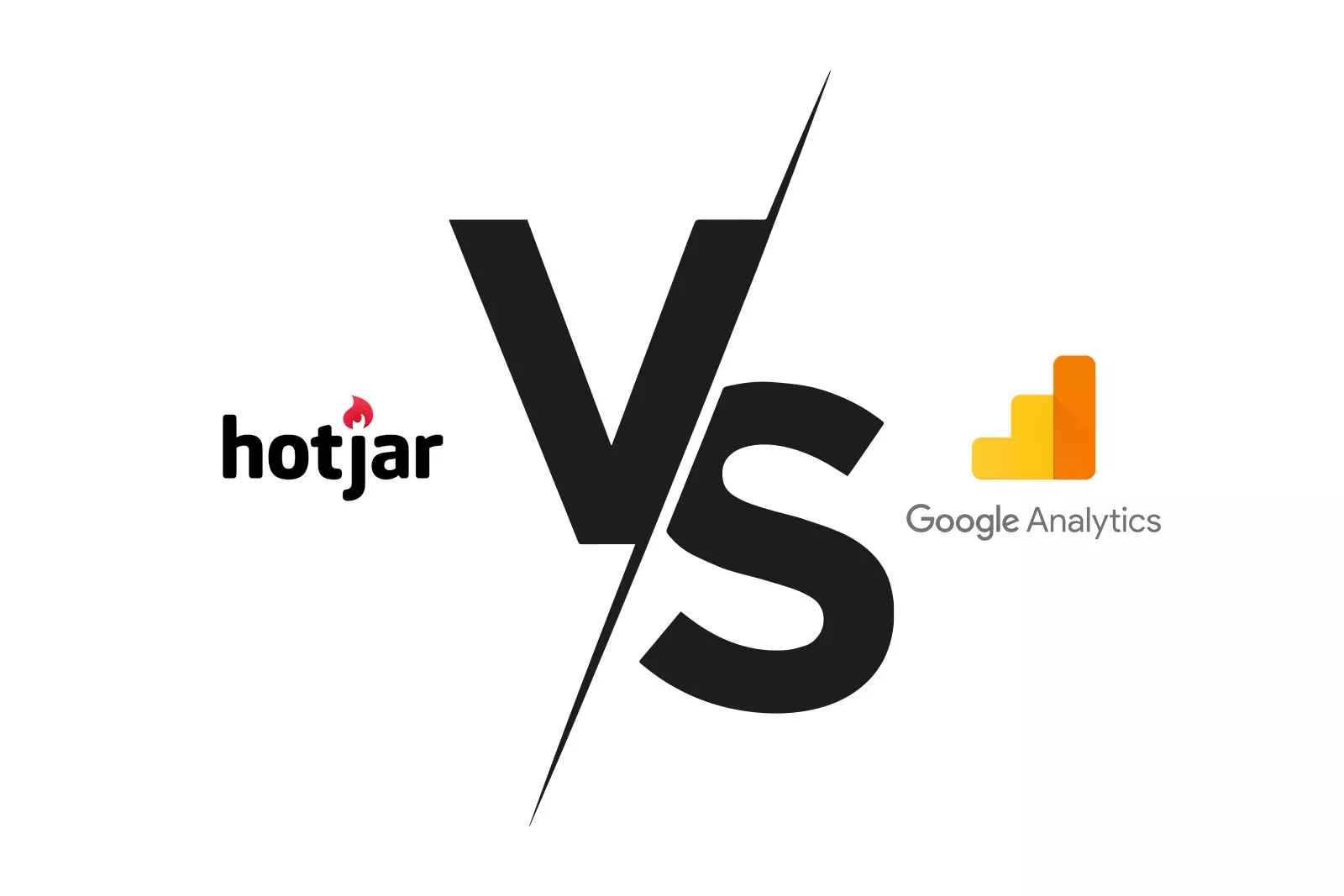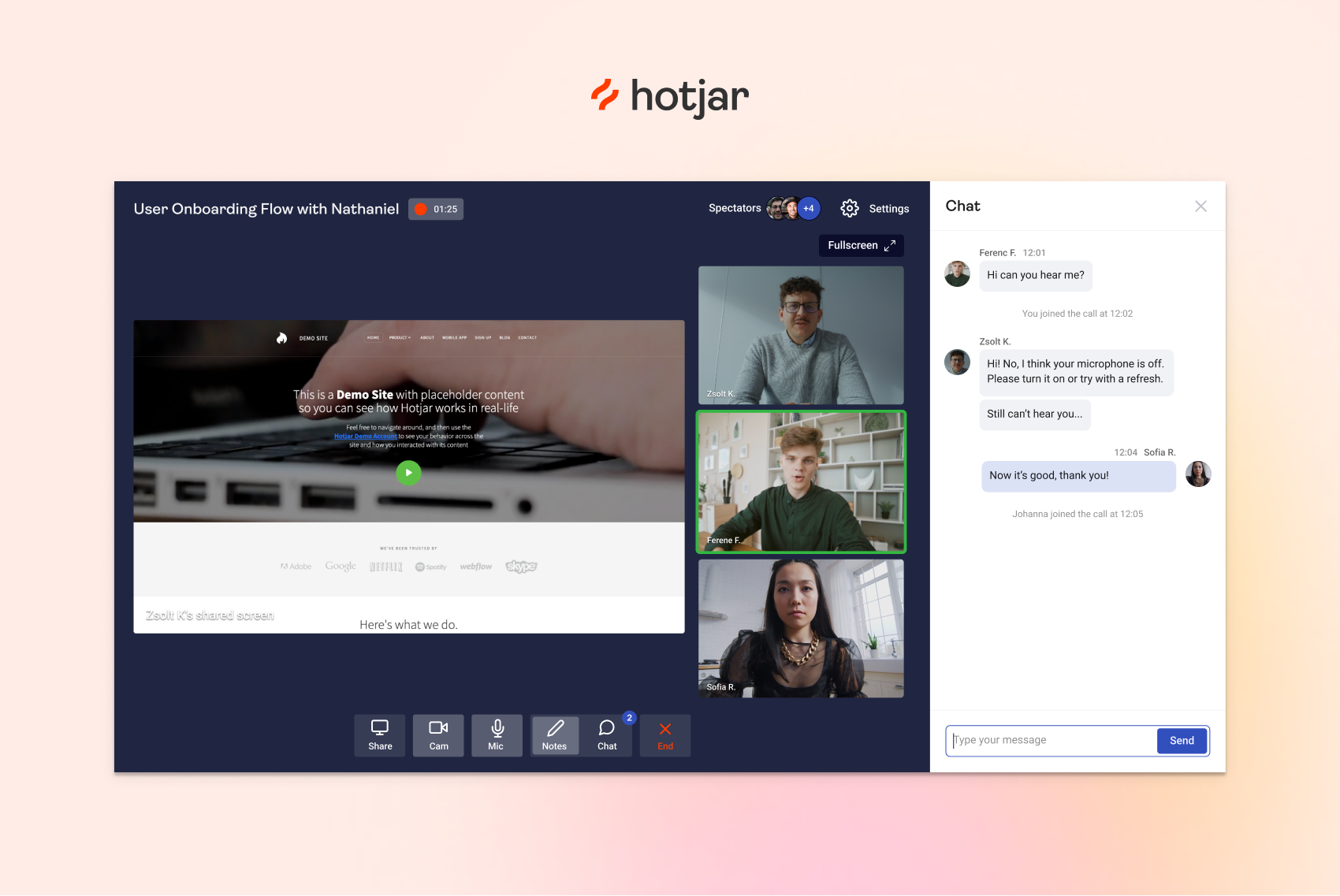As an online business owner, you must know how your users interact with your web app, landing page, website, or...

7 Best Market Segmentation Tools For Top-Notch Personalization
Even though you have a very specific Ideal Customer Profile, your target audience will still consist of different types of people. They will have varying interests, attitudes, geographical locations, income levels, and so on. Customers that share similar characteristics belong to the same “segment.”
So, what does this mean for your marketing campaigns?
Your target audience will have diverse customer behaviors, needs, and wants. If you want your marketing efforts to be as successful as possible, you need to tailor them in a way that resonates with your different customer segments the most.
In this guide, we’ll go over the definition of audience segmentation tools, why they are important for your business, and some of the best tools to have in your stack.
What Are Market Segmentation Tools?
Market segmentation tools are like smart filters for your customer data. They help businesses sort their customers into groups based on demographic data (age, gender, how much they earn), psychographic data (interests, values), and how they interact with the brand (what they buy, how loyal they are).
Having access to this kind of customer data makes it easier to figure out who you’re talking to with your marketing campaigns.
Additionally, segmentation tools crunch numbers and spot patterns in customer data to help businesses understand different chunks of their audience better. With this insight, companies can customize their products and messages to match what specific groups of customers might want or need.
In doing so, you can make marketing more spot-on and save money by focusing efforts where they’re most likely to pay off.
What Can a Customer Segmentation Tool Provide?
Customer segmentation is a non-skippable step if you want to increase customer satisfaction and create more targeted marketing strategies.
Here are some of the most important reasons why your business needs to segment customers based on their characteristics:
More Personalized Marketing Efforts
Many marketing experts say that personalization is one of the best (if not the best) ways to advance customer relationships. However, not all businesses know the level of personalization they need to truly impact their audience.
Personalized marketing goes beyond just addressing the customer by name. With customer segmentation tools, you can create content and offers based on specific interests and behaviors.
For example, if data shows that a particular segment frequently purchases athletic gear, you can customize emails to highlight sports equipment or fitness tips. Additionally, you can create dynamic offers such as first-time buyer discounts for new customers and loyalty rewards for repeat customers to make each group feel uniquely valued and understood.
Segmentation tools can also allow marketers to create promotions and offers in real-time based on customer behavior and historical data.
For instance, if a customer frequently abandons the shopping cart, personalized marketing strategies might include sending them a targeted email with a special discount on the items they left behind or offering free shipping to nudge them towards completion of the purchase.
Maximized Customer Engagement
Customer segmentation allows for the design of highly relevant marketing campaigns. If a segment shows a preference for eco-friendly products, then campaigns can be designed to emphasize sustainability.
Relevance increases the likelihood of engagement. Plus, adding interactive elements like quizzes or polls that reflect the unique interests of each segment can further increase involvement, which can encourage customers to interact more deeply with the brand.
Lower Ad Expenses
Online ads are always a huge part of marketing campaigns, but they may not be effective if you don’t have a good understanding of who your customers are.
Honing in on segments with a higher propensity to buy, such as pet owners for pet care products, can help you ensure that your marketing efforts resonate with an already interested audience.
This specificity helps reduce the spread of your resources across a broad, uninterested audience, which can increase the chances that your ads reach and impact those most likely to respond.
Plus, focused advertising naturally lowers your Cost Per Acquisition (CPA). Because your ads are more likely to reach and convert potential buyers, the amount of money you spend on converting each customer decreases.
Personalized Communication Channels
Different customers have different preferences for how they receive marketing communications. Some may respond better to emails, while others prefer the immediacy of text messages or the visual appeal of social media.
Customer segmentation tools can help identify the most effective communication channels for each segment and allow marketers to adjust their approach accordingly.
For example, younger demographics might be more engaged through Instagram or TikTok, whereas older segments may prefer email newsletters or Facebook.
Data-Driven UI and UX Optimization
Segmentation tools often let you see what devices your audience is using to interact with your digital channels. Is a big chunk of your users on the desktop version? Are you seeing more users on mobile? And, more importantly, which channel generates the most conversions?
These data points can be extremely important for optimizing your user interface (UI) and the user experience (UX).
For example, if you are seeing a very low conversion rate on your website’s mobile version, it might mean that you need better mobile optimization.
Better Customer Retention
All the advantages we’ve mentioned so far contribute to better customer retention. For one, you can deliver personalized experiences that resonate more deeply with each group. You can also create targeted and relevant communication.
Instead of sending generic messages to all your customers, you can tailor your emails, offers, and updates to match the interests and needs of different segments.
In addition, understanding the specific needs and preferences of different segments can help you provide better customer service. So, if a segment frequently purchases premium products, you might offer them exclusive support or dedicated service lines.
This kind of attention to detail can improve their overall experience and satisfaction, which can, in turn, lead to higher retention rates.
Key Features of Audience Segmentation Tools
The best audience segmentation tools are packed with features that help marketers dissect and understand their customer base with precision. They are a must for creating effective marketing strategies tailored to specific groups.
Here are several key features you should look for in the best customer segmentation tool:
1. Data Integration
A robust segmentation tool can integrate data from various sources. This includes demographic information from customer databases, transaction histories from sales software, behavioral data from website analytics, and even social media interactions.
The ability to pull and synthesize data from these diverse sources is fundamental because it provides a more complete picture of customers and how they interact with the brand.
2. Advanced Customer Segmentation Analysis
These tools aren’t just collecting data but can also analyze it with accuracy and precision. They use advanced techniques like artificial intelligence to sort customers into groups based on shared traits and predict future behaviors.
Machine learning is also in the mix. It can help spot trends that aren’t immediately obvious, which can open up new ways to group your audience.
3. User-Friendly Interface
Despite the complex tech behind them, these tools are designed to be easy to use to minimize the learning curve.
They usually have clear dashboards and straightforward controls that let you set up and manage segments without needing to be a tech whiz.
4. Real-Time Data Collection and Segmentation
Things change fast in the digital world, so being able to segment your audience in real-time is a must if you want to stay ahead of the competition.
This feature allows you to quickly adapt your marketing strategies based on what’s working right now, like tweaking your campaigns to engage a group that’s suddenly showing more interest.
5. Customizability and Flexibility
Every business is different, and a good segmentation tool should be able to meet your needs. Luckily, most of these marketing tools often let you tailor features to suit your specific needs, like creating segments based on criteria that you think are important.
Whether it’s customer buying habits, preferences, or how often they engage with you, the tool should be able to collect relevant data and show you insightful analytics.
6. Actionable Insights and Reporting
The point of customer segmentation is to give you an idea of what you need to do to connect with your customers better.
After all the number crunching, the tool should also give you clear, actionable insights and detailed reports on each segment.
It’s important that these reports are easy to understand and offer solid advice on what to do next so that it helps you make informed decisions on how to approach your marketing.
Best Customer Segmentation Tools
When you’re looking to get a better handle on your customer base and personalize your marketing efforts, having the right tools is an absolute must.
Here are some top customer segmentation tools that can help you get the job done:
1. FullSession
FullSession is all about understanding how users interact with your website.
It offers features like session recording, heatmaps, and customer journey mapping. They are great for analyzing user behavior on your site—where they click, how long they stay, and what might be stopping them from completing a purchase.
Plus, you can segment users based on their behavior to pinpoint what works and what doesn’t in your user experience.
2. Adobe Experience Cloud
Adobe Experience Cloud is best for those who need to manage large amounts of customer data and want detailed analytics. It offers an all-inclusive suite of marketing tools that work well for large enterprises.
A standout feature is Adobe Analytics, which is a part of the Adobe Experience Cloud that provides real-time analytics and detailed segmentation capabilities. It allows you to segment audiences based on their behaviors, transactions, and even predictive insights about future behaviors.
3. Mailchimp
Mailchimp started as an email marketing tool but has grown into much more. Its segmentation features are particularly user-friendly, which makes it a good option for those who are new to this kind of marketing technology.
You can segment your mailing lists based on user behavior like past opens and clicks, which helps in sending out emails that are more likely to be read and acted upon.
Plus, Mailchimp uses machine learning to categorize your customers into segments based on their likely future behaviors. This includes potential spend categories and churn likelihood that can help you design your marketing strategies more effectively and proactively engage with your audience.
4. Segment
Segment serves mainly as a customer data platform (CDP) that helps you manage and direct your customer data across different marketing and analytics tools. It simplifies gathering, storing, and using customer data to improve targeting and personalization.
Overall, it’s especially useful if you’re looking to centralize your customer data operations in one accessible place.
One of its key features is the Connections feature. It simplifies the data integration process tenfold. Instead of writing custom code to send data to each tool or platform you use, Segment collects all your data and routes it wherever you want it to go with just a few clicks.
5. Google Analytics
Let’s not forget one of the OGs—Google Analytics. The segmentation tool lets you slice and dice your site’s visitor data based on many different criteria.
You can segment users by demographics like age, gender, and location, or by their behavior on your site, such as new versus returning visitors, how often they visit, and how engaged they are.
Also, you can look at the technology side of things, like what browser or device they’re using. This segmentation helps you get a clear picture of who your visitors are and how they interact with your site.
6. ActiveCampaign
ActiveCampaign combines email marketing, automation, sales automation, and CRM into a single platform. It’s known for its powerful segmentation features that allow you to tailor content and automate campaigns based on user actions, preferences, and previous interactions.
This tool is great if you’re looking for deep customization and automation capabilities to engage your customers at various stages of their journey.
7. Mixpanel
Mixpanel allows you to create user segments by almost any criteria. Whether it’s users who signed up last week, those who made a purchase, or even users who dropped off after not completing a task, you can track and analyze these specific groups in detail.
It’s also a great product analytics tool and a great option if you want to focus on product development. Mixpanel allows you to track specific actions that users take within your product, such as clicks, form submissions, or any custom events relevant to your product.
By analyzing the sequence of events that users follow, Mixpanel helps you map out user journeys. This insight is extremely important for identifying common paths that lead to conversions or uncovering where users might be dropping off.
Start Segmenting Your Customer Groups Today
Each user belongs to a specific customer segment, and within that segment is a group of people with similar needs, wants, and characteristics. If you want your marketing campaigns to resonate with these audiences, leveraging customer segmentation tools is the way to go.
Now that you know what customer segmentation tools can do for you, it’s time to find the right platform for your business. If you want something user-friendly and scalable, start your journey with FullSession!
How to Use FullSession for Customer Segmentation
FullSession is a full-stack web analytics tool that serves many marketing goals, including segmenting your customers for better personalization.
Here’s a step-by-step guide on how to use FullSession’s robust customer segmentation tool:
Step 1: Set Up and Integration
First, make sure you integrate the app with your website properly. This process involves adding a tracking code to the pages you want to monitor. Once set up, FullSession will begin collecting data on how visitors interact with your site.
Step 2: Data Collection
Allow some time for FullSession to gather enough data. The platform tracks various user actions, such as clicks, scrolls, and page transitions. It also captures more detailed interactions like text selections and mouse movements. This data will form the basis of your segmentation efforts.
Step 3: Identify Key Behaviors
Analyze the collected data to identify key behaviors that are relevant to your business objectives.
For example, you might want to segment users based on:
- The frequency of visits
- Specific pages they visit
- Actions taken on a page (e.g., downloading a resource, filling out forms)
- Engagement level (e.g., time spent on site, interaction with content)
Step 4: Create User Segments
Using the behaviors identified in Step 3, create user segments directly in FullSession. You can define segments by any combination of behaviors tracked by the tool.
For instance:
- New visitors vs. returning visitors
- Users who abandoned a shopping cart vs. those who completed a purchase
- Users who engage heavily with content vs. those who bounce quickly
Step 5: Analyze Segments
With your segments created, use FullSession’s analytics features to delve deeper into each group’s behavior. Look at the aggregated data for trends and patterns that might inform your business strategy.
For example, if a segment of users who watch a product video tend to make a purchase, you might consider enhancing video content across your site.
Step 6: Apply Insights
Use the insights gained from segment analysis to tailor your website and marketing strategies.
This could involve:
- Personalizing content and offers based on user behavior
- Optimizing the user experience to increase engagement for underperforming segments
- Adjusting navigation or calls to action to improve conversion rates for specific user groups
Step 7: Monitor and Refine
Customer behavior and preferences can evolve, so it’s important to continuously monitor and refine your segments over time. Revisit your segments periodically to ensure they still align with user behavior and business goals.
Finally, use FullSession to test changes to your website and see how they affect different segments.
FullSession Pricing Plans
The FullSession platform offers a 14-day free trial. It provides two paid plans—Basic and Business. Here are more details on each plan.
- The Basic plan costs $39/month and allows you to monitor up to 5,000 monthly sessions.
- The Business plan costs $149/month and helps you to track and analyze up to 25,000 monthly sessions.
- The Enterprise plan starts from 100,000 monthly sessions and has custom pricing.
If you need more information, you can get a demo.
Try FullSession’s Customer Segmentation Tool Right Now
It takes less than 5 minutes to set up your customer segmentation tool with FullSession, and it’s completely free!
FAQs About Customer Segmentation Software
Are market segmentation tools suitable for small businesses?
Yes. There’s a range of tools out there tailored to fit any size of business, ensuring that you can find one that matches your needs and budget.
How often should I revise my customer segments?
It’s wise to review your segments at least once a quarter. Markets evolve, and staying updated means staying relevant.
Can these tools integrate with my existing CRM?
Many top-tier segmentation tools offer robust integration capabilities with popular CRM systems, making them a seamless addition to your marketing technology stack.





